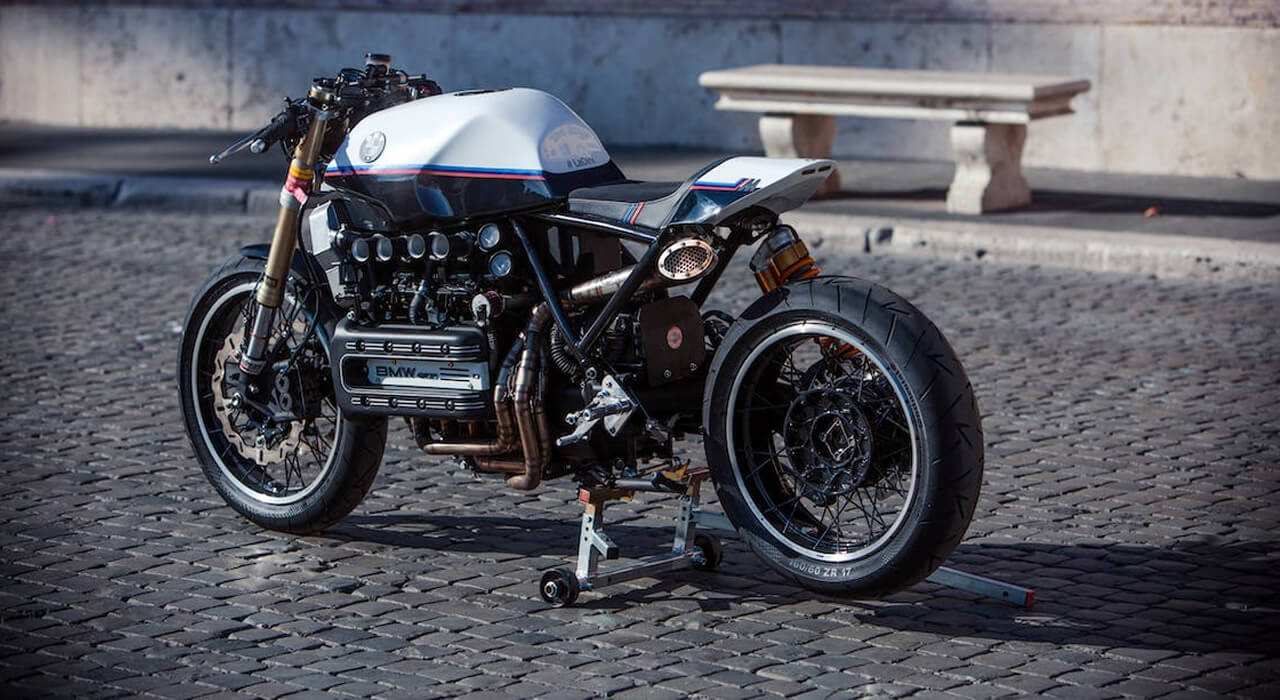Riding a motorcycle is an exhilarating experience, a harmonious symphony of freedom, adrenaline, and sheer joy. It’s more than a mode of transport; it’s a visceral connection between rider and machine. The thrill of straddling a powerful engine, feeling the wind rush past, and leaning into curves on winding roads encapsulates the essence of riding.
Amidst this thrill, the significance of motorcycle performance stands out prominently. It’s the unsung hero, silently influencing every twist of the throttle, every brake applied, and every lean into a turn. The performance of a motorcycle isn’t merely about speed; it’s about the seamless integration of various components working together to deliver a safe, efficient, and dynamic ride.
In this article, our focus is to delve deeper into the realm of motorcycle performance enhancement. We aim to uncover the intricacies that allow riders to push the boundaries of their machines without losing sight of safety and reliability. From the roaring power of the engine to the subtle responsiveness of the suspension and the precision of braking systems, each facet contributes to the overall performance.
Our purpose is clear: to explore practical and effective ways to optimize a motorcycle’s performance. However, it’s not just about amping up speed or power; it’s a balanced pursuit of enhancing performance while maintaining the integrity and reliability of the ride. We aim to offer insights into upgrades, adjustments, and maintenance practices that allow riders to extract the most from their motorcycles without compromising safety or longevity.
Suggestion: New Upcoming 2024 Volvo Cars XC60 And XC90 Are Finally Here!
So, buckle up and get ready to explore the art and science behind maximizing a motorcycle’s performance. Whether you’re a seasoned rider seeking enhancements or a novice venturing into the world of motorcycles, join us on this journey to uncover the secrets that elevate the riding experience to new heights.
Understanding Motorcycle Performance
Performance in the realm of motorcycles encompasses various aspects that collectively contribute to the overall functionality and capability of the ride. It’s a comprehensive measure that extends beyond sheer speed or power, encompassing the efficiency, responsiveness, and handling prowess of the machine.
At its core, the critical components influencing a motorcycle’s performance primarily revolve around the engine, suspension, brakes, and other mechanical systems. The engine serves as the beating heart of the motorcycle, generating power and torque crucial for acceleration and overall performance. A well-tuned engine not only delivers power but also ensures fuel efficiency and reliability.
Apart from the engine, the suspension system plays a pivotal role in dictating the bike’s handling and comfort. It’s responsible for absorbing shocks, maintaining stability, and allowing the rider to navigate different terrains with ease. An optimized suspension setup contributes significantly to smoother rides and better control over the motorcycle.
Moreover, the braking system stands as a crucial safety feature while significantly impacting the bike’s performance. An efficient braking system, comprising brake pads, discs, and calipers, ensures not just stopping power but also precision and control during deceleration, crucial for overall safety and handling.
Enhancing Engine Performance
Enhancing engine performance is a pursuit that requires a delicate balance between extracting more power and ensuring the engine’s reliability and longevity. Strategies for optimizing engine performance involve practical upgrades that augment power without compromising durability.
Simple yet effective upgrades play a pivotal role in maximizing engine potential. Air filters, for instance, are an often overlooked yet crucial component. Upgrading to high-performance air filters enhances airflow, promoting better combustion and fuel efficiency without overstressing the engine.
Another significant upgrade revolves around exhaust systems. Upgrading to a performance-oriented exhaust system not only improves exhaust flow but also enhances engine breathing, resulting in increased power output. However, it’s essential to strike a balance, avoiding overly loud or disruptive exhaust systems that may compromise legal compliance or rider comfort.
Moreover, tweaking fuel mapping through ECU (Engine Control Unit) remapping or fuel management systems can optimize the engine’s performance. This adjustment ensures that the air-fuel mixture is precisely calibrated for enhanced power delivery without risking reliability.
Also Check: 2024 Chevy Chevelle SS Release Date, Price & All New Features
Throughout these upgrades, maintaining reliability remains paramount. While seeking to boost power, it’s crucial to retain the engine’s integrity and durability. A careful approach to upgrades ensures that performance enhancements don’t overtax or strain the engine beyond its design limits. Opting for reputable aftermarket components engineered for compatibility and reliability is key to striking this balance.
Optimizing Suspension and Handling
Suspension upgrades play a pivotal yet often understated role in shaping a motorcycle’s ride quality and handling. These upgrades, while not necessarily flashy, significantly impact the rider’s comfort, control, and overall riding experience.
Adjustments in preload, damping, and other suspension settings are fundamental aspects of suspension upgrades. Preload adjustments influence the suspension’s initial compression, affecting how the bike handles varying loads. Properly adjusting preload ensures optimal suspension travel, allowing the bike to absorb bumps and undulations on the road more effectively.
Damping adjustments, controlling the suspension’s rebound and compression rates, fine-tuning how the suspension reacts to different road conditions. Achieving the right balance in damping settings results in improved stability, responsiveness, and smoother rides.
Moreover, the impact of suspension setups on handling is substantial. A well-calibrated suspension system provides better feedback to the rider, enhancing control and confidence, especially in corners and uneven terrains. Whether it’s tackling twisty mountain roads or cruising on highways, a suitable suspension setup tailors the ride to the rider’s preferences and the demands of the riding style.
Understanding the importance of suitable suspension setups for various riding styles is crucial. For instance, off-road or adventure riding demands a suspension setup that excels in absorbing rugged terrains, whereas sport riding necessitates firmer settings to enhance cornering prowess. Commuters might prefer a setup focused on comfort and stability for daily urban rides.
Motorcycle Rearsets can further enhance handling dynamics by providing a more adjustable foot position, allowing riders to fine-tune their stance for optimal control and comfort.
The key takeaway lies in the significance of suspension upgrades in fine-tuning a motorcycle’s ride quality. While not flashy, these upgrades wield immense influence over how the bike handles, responds, and ultimately, how enjoyable and comfortable the ride is. It’s about finding the right balance in suspension settings that complement the rider’s style, ensuring a more controlled, confident, and tailored riding experience.
Improving Braking Dynamics
Brake upgrades are a critical aspect of enhancing a motorcycle’s control and safety, offering tangible improvements without exaggeration. The role of brake components—pads, discs, and calipers—cannot be overstated in augmenting stopping power and control.
Brake pads are fundamental in converting kinetic energy into thermal energy through friction, enabling the motorcycle to slow down or stop. Upgrading to high-performance brake pads enhances the braking force and modulation, providing a more responsive and consistent braking experience without overstating its impact.
Similarly, brake discs or rotors play a crucial role in enhancing braking performance. Upgraded discs, often featuring better heat dissipation properties or improved materials, facilitate efficient heat management and contribute to better overall braking effectiveness.
Furthermore, calipers, responsible for squeezing the brake pads against the discs, also contribute significantly to braking performance. Upgraded calipers with improved design or materials offer better-clamping force and heat dissipation, resulting in more precise and controlled braking.
Suggestion: List of The 8 Most Reliable Luxury Car Brands in American Market 2023
Touching on safety features like ABS (Anti-lock Braking System) and traction control systems, these technologies aid in preventing wheel lock-up during hard braking or loss of traction. While not direct upgrades to brake components, they play a pivotal role in enhancing control and safety by optimizing brake performance in adverse conditions.
Ultimately, brake upgrades, when appropriately chosen and installed, have a noticeable impact on a motorcycle’s control without resorting to exaggeration. These enhancements in brake pads, discs, calipers, and additional safety features like ABS and traction control systems contribute collectively to a more responsive, controlled, and safer braking experience, allowing riders to navigate various riding conditions with greater confidence and precision.
Weight Reduction and Aerodynamics
Addressing weight reduction techniques is pivotal in enhancing a motorcycle’s performance parts without overstating their effects. Shedding excess weight directly impacts a bike’s agility, acceleration, and handling. Techniques like using lightweight materials for components, optimizing the chassis, and streamlined design play a significant role. Reduced weight translates into an improved power-to-weight ratio, allowing for quicker acceleration and more responsive handling.
Furthermore, aerodynamics significantly impacts a motorcycle’s stability and efficiency. While not as prominent as in automotive design, aerodynamics still plays a crucial role in minimizing drag and optimizing airflow. Factors such as fairings, windshield design, and bodywork contribute to reducing wind resistance, thereby improving stability at high speeds and enhancing fuel efficiency. However, unlike in cars, the impact of aerodynamics in motorcycles is often subtler due to the rider’s exposed position.
Balancing weight reduction techniques with considerations for aerodynamics is essential. While reducing weight improves maneuverability and acceleration, optimizing aerodynamics contributes to stability and efficiency. Both aspects together lead to an overall enhancement in a motorcycle’s performance without overstating their impacts. Thus, a harmonious blend of weight reduction strategies and aerodynamic improvements can elevate a motorcycle’s performance without exaggeration, making for a more responsive, efficient, and enjoyable ride.
Regular Maintenance for Optimal Performance
Highlighting the importance of regular maintenance for motorcycles involves emphasizing its significance without resorting to overstatement. Regular maintenance is the cornerstone of ensuring a motorcycle’s longevity, reliability, and optimal performance.
Popular Post: Top 10 Cars That Get 40 MPG Under $10000
Basic maintenance tasks such as routine oil changes are fundamental. Clean oil lubricates the engine components, reducing friction and preventing premature wear. Additionally, caring for the chain by cleaning and lubricating it regularly ensures smooth power transmission and extends the lifespan of both the chain and sprockets. Keeping an eye on tire pressure and maintaining it within the recommended range ensures optimal grip, handling, and safety while riding.
These seemingly mundane tasks significantly impact a motorcycle’s overall health. Regular maintenance is about ensuring that these crucial elements are functioning at their best, preserving the motorcycle’s performance and safety on the road. It’s not about overstating their importance but rather recognizing that neglecting these tasks can lead to costly repairs, compromised performance, and safety hazards.
By stressing the significance of regular maintenance in a balanced manner, riders are encouraged to adhere to these basic yet critical tasks. Regular maintenance isn’t just about extending the life of a motorcycle; it’s about ensuring a safer, smoother, and more reliable riding experience. Therefore, while the tasks themselves may seem routine, their cumulative impact on a motorcycle’s health and performance cannot be understated.
Personalization and Customization
Customization, when approached thoughtfully, can subtly impact a motorcycle’s performance without overstating its influence. Each customization, whether aesthetic or functional, holds the potential to tailor the bike to the rider’s preferences while subtly influencing its performance.
For instance, customizing the ergonomics through handlebar adjustments or seat modifications can enhance rider comfort and control, indirectly affecting performance. A more comfortable riding position allows the rider to maintain focus and confidence, leading to improved handling and maneuverability.
Also, selecting aftermarket parts or modifications that align with individual preferences can lead to a personalized riding experience without compromising the motorcycle’s performance. Choosing exhaust systems or air filters that complement the rider’s style while maintaining legal compliance can subtly impact power delivery and throttle response, contributing to a more satisfying riding experience.
However, it’s crucial to note that customization’s impact on performance tends to be nuanced. While certain modifications might offer incremental improvements, expecting drastic enhancements solely from customization may lead to unrealistic expectations.
The importance lies in selecting modifications that not only cater to individual preferences but also integrate seamlessly with the motorcycle’s engineering. It’s about finding the balance between personalization and functionality. Aesthetic alterations can complement performance enhancements, but it’s crucial to ensure that modifications don’t compromise the bike’s reliability, safety, or legal compliance.






